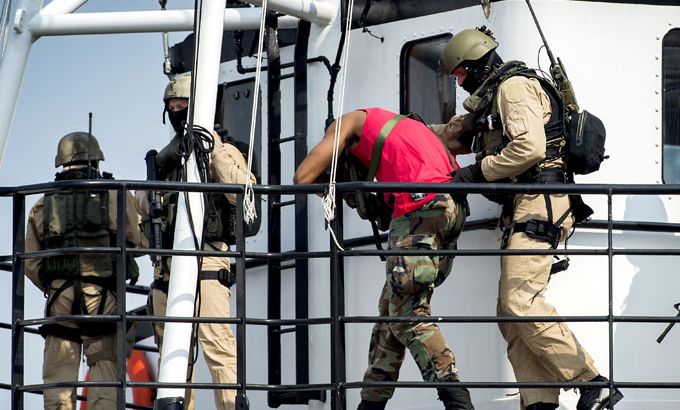
The human cost of piracy
A new report sheds light on how rising piracy affects not only ships and their cargo but the crews and their families.
Seafarers taken hostage by maritime pirates are facing psychological stress, physical abuse and even death, according to a new report that says they are not getting the support they need.
They haven’t heard from their son now for two years and he’s being held there in Somalia that the companies have refused to negotiate and refused to talk to the pirates and so they are stuck there.
A 50-page document has been put together by the International Maritime Bureau, Oceans Beyond Piracy and the Maritime Piracy Humanitarian Response Programme.
The focus of piracy on the high seas has often been on the ships and their cargo and the ransoms paid to get them back, but the new study highlights the human cost and the ordeal of the ships’ crews. It also noted a shift in patterns of maritime piracy.
For the first time, the number of sailors attacked off West Africa exceeded those assaulted by pirates based in Somalia.
It concluded that 851 seafarers were attacked by Somali pirates in 2012 compared to 966 off the coast of West Africa.
The economic cost bears no comparison. The financial burden of Somali piracy is put at more than $6bn, with the bulk of that going on security and extra fuel from increased shipping speeds. The cost of West African piracy was significantly lower at $950mn.
Piracy is also taking a heavy human toll.
The quarterly report titled Piracy and Armed Robbery Against Ships, interviewed crews who had been involved in attacks by pirates. It found many suffered physical and psychological abuse, and financial difficulties. It classified all hostages as high risk, and said the average time in captivity for those still held in Somalia exceeded two years.
Pirates are negotiating with families, and the families are going through a terrible time trying to raise impossible sums of money in very difficult circumstances.
In some cases, companies refused to pay captives for the whole time they were held hostage, and families of seafarers were critical of the support given by governments and shipping companies.
The piracy report logged personal accounts detailing physical and psychological abuse: being beaten and burned with cigarettes, tied up for hours in the sun and locked in freezers, having fingernails pulled out with pliers, Hostages were frequently told they had no hope because nobody back home cared about them.
So are governments and shipping companies doing enough to protect and look after their crews?
Presenter Jane Dutton is joined for this episode of Inside Story by guests: Kaija Hurlburt, the project manager for Oceans Beyond Piracy, and one of the lead authors on the piracy report; John Steed, the chief of maritime security and counter piracy at the UN assistance Mission in Somalia; and Roy Paul, the programme director for the Maritime Piracy Humanitarian Response Programme.